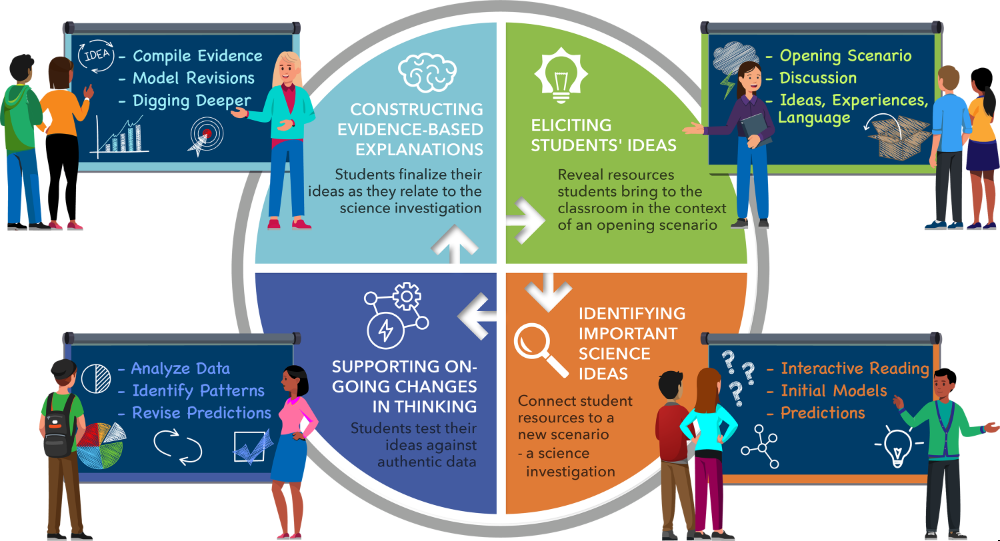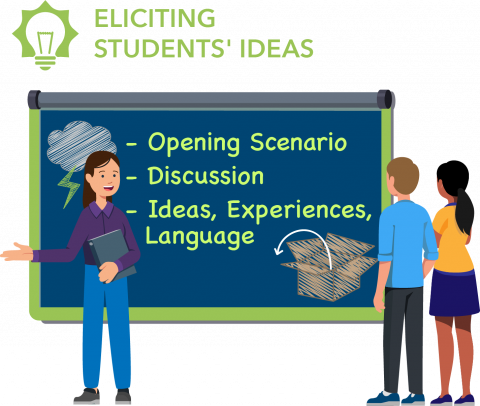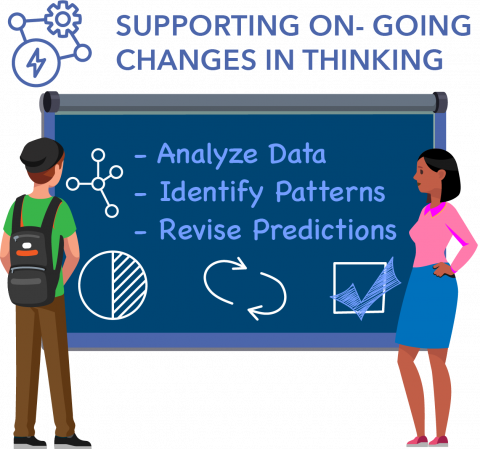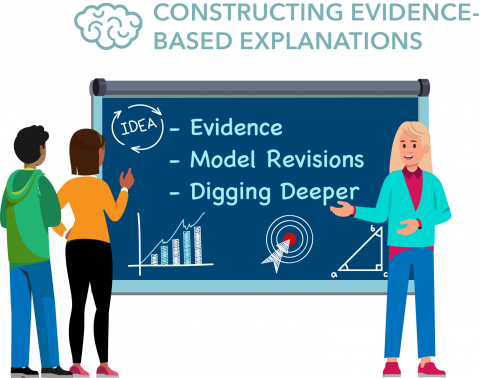The Eliciting Students' Ideas practice is used to start the Data Puzzle and to find out what your students already know about the science ideas you will teach. Students are introduced to an "opening scenario" through a video, picture, or question and asked to reflect on their past experiences and knowledge to observe and explain what is going on. Student observations and explanations for the scenario are made public through discussion and represent resources (e.g., past experiences, language) students use to make sense of ideas presented in the classroom. These resources serve as the foundation upon which students' ideas can be reconstructed and reorganized against evidence gathered in the next practice, "Identifying Important Science Ideas".
 Teacher Tip:
Teacher Tip:
This practice should take place BEFORE the student worksheet is distributed. Use the slide deck to 1) elicit students' ideas about the opening scenario (warm-up prompt, think-pair share, white boarding), and 2) introduce the natural phenomena being investigated by the scientist(s) featured in the Data Puzzle.
Additional strategies for the Eliciting Students' Ideas practice here



 Teacher Tip:
Teacher Tip:
 Teacher Tip:
Teacher Tip:
 Teacher Tip:
Teacher Tip: